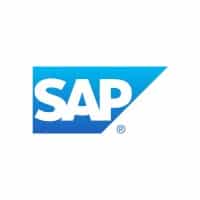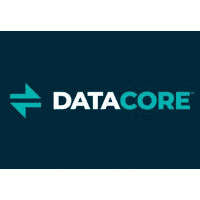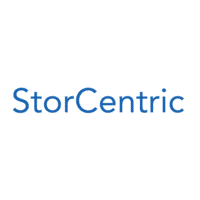Data management platforms are used to gather, cleanse, store, analyze, and distribute data. They are often focused on the management of customer data for marketing and customer service purposes, though this is far from their primary function.
These data management software applications and tools help bring order to the massive amounts of data that modern organizations collect via ERP, CRM, BI, SaaS tools, social media, and other channels. Once gathered, organized, and tagged appropriately, that information can be analyzed and then presented to users in a way that is digestible.
Table of Contents
Key Features of DMPs
Data management platforms vary considerably in their feature sets. A large number of the following functions, however, will be found in most of them.
- The ability to gather and store data from a great variety of different sources and channels.
- Security safeguards such as encryption, access controls, ransomware protection.
- The ability to recover should you fall victim to a successful attack.
- Can be deployed in the cloud or on-premises.
- Regulatory compliance.
- Data integrity features such as data, fingerprints, secure time stamps, file audits, and backup.
- Ability to build a metadata index directly from the systems to be managed.
- Scalable to PBs of capacity across billions of objects.
- Vendor neutral.
- Insights into characteristics such as aging, access frequency, file types, file size distribution, largest consumers of capacity, largest consumer in terms of number of files, etc.
- Open protocols should be used for data access and transmission.
- Uncovering meaningful insights.
- Multi-site (to segregate fault domains and ensure proximity to consumers).
Also read: 5 Storage Needs of Modern Data Centers
Top Data Management Vendors
There are a great many data management systems out there. Enterprise Storage Forum reviewed many of them. Here are our choices, in no particular order.
Datadobi

Datadobi’s offerings focus on data placement, infrastructure optimization, and data protection. Its foundational technology is designed for unstructured data and provides an automated approach for data migration, verification, and protection in both NAS and object environments. It operates in some of the largest, most complex data environments.
Key Differentiators
- Migrates and protects data at scale in a platform-neutral fashion.
- Datadobi can work with any network attached storage (NAS) offering as well as any object storage platform that has implemented the S3 API.
- Provides orchestration, data insights, and intelligence, a high-performance data transfer pipeline, and integrity enforcement.
- The design criteria is specific to the domain of unstructured data (i.e, file and object).
- Eliminates data corruption.
- Executes all operations in a highly parallel fashion
- The ability to throttle workloads.
Oracle BlueKai

Oracle BlueKai Data Management Platform enables marketers to unify and activate data to execute campaigns across digital advertising channels. It enables them to drive more personalized and contextual advertising that engages and wins over relevant audiences, and optimize spend across programmatic advertising through open web and social channels.
Key Differentiators
- Unify advertising data by ingesting first-party online (across desktop and mobile) and offline data and enhancing it with second- and/or third-party datasets.
- Determine the right customers to target by taking advantage of look-alike modeling to grow prospecting audiences.
- Create effective cross-device campaigns using the Oracle ID Graph to bring in third-party data across different marketing channels and devices.
- Get actionable audience insights across all events represented in the data with analytics reports.
- Reach out with precision and personalization with more than 200 integrations across the ecosystem are preloaded in the platform.
- Oracle ID Graph helps marketers connect identities across disparate marketing channels and devices to one customer.
SAP

The SAP Business Technology Platform (BTP) is an integrated offering comprised of four technology portfolios: database and data management, application development and integration, analytics, and intelligent technologies. SAP Database and Data Management enable control of the data landscape with an end-to-end view of all data through one single gateway. SAP databases securely provide transactional and analytical processing across on premises, hybrid, and multi-cloud environments.
Key Differentiators
- A mind-boggling collection of database tools such as SAP HANA, SAP HANA Cloud, SAP IQ, SAP Adaptive Server Enterprise, and SAP SQL Anywhere.
- Data management tools to identify, gather, analyze, and make data available throughout the enterprise, including SAP Master Data Governance, SAP Information Steward, SAP Data Quality Management, microservices for location data, SAP PowerDesigner, SAP Information Lifecycle Management, SAP Landscape Transformation Replication Server, and SAP Data Services.
- In-memory analytics and processing to deliver content and conclusions in near-real time.
- Cloud database management for those wanting to operate databases in the cloud or migrate databases to the cloud.
- Governance of data, including compliance and privacy.
- SAP is used by a huge number of organizations around the world to manage data, ranging from massive global organizations to SMEs that are data centric.
- SAP is consistently highly ranked in Gartner Magic Quadrants (MQ) and Forrester Wave analyses of data management and data analytics.
- SAP has active partnerships with thousands of companies around the world. This encompasses a vast reseller or VAR ecosystem, IT companies harnessing SAP technology for their own products and services, as well as IT companies that have integration partnerships with SAP such as Amazon, Google, Azure, Cisco, and other industry leaders.
NetApp StorageGRID

NetApp StorageGRID include flexible information lifecycle management rules, asymmetrical multi-site architecture with geo-distributed EC, and purpose-built load balancer with QoS and monitoring features. Additionally, it integrates with NetApp’s portfolio including FabricPool for flash to object tiering for NAS/SAN workloads, SnapMirror Cloud, and ActiveIQ. Most StorageGRID deployments support multiple tenants and workloads.
Key Differentiators
- Supports hardware appliances (disk, hybrid, and all-flash) as well as VM and software only.
- Global namespace with active/active replication.
- SG100/1000 load balancer reduces cost and complexity for customers (third-party load balancers are supported).
- Low touch operations: Ansible for automation and Prometheus metrics.
- Hybrid cloud workflows (SNS, replication) to AWS, S3 compatible, and Azure
- Validated solutions with industry leaders such as Commvault, Splunk Smartstore, Rubrik, and Veeam.
- All flash nodes for modern high-performance object workloads with lower latency and high throughput such as analytics and AI/ML.
DataCore

For unstructured data, DataCore Swarm software addresses the massive scale of big data. It provides a multi-tenant data management solution for unstructured files remotely accessible via S3/HTTP and NFS from any application, device, or end-user. The scalable on-premises, private cloud offering includes a content portal tailored for different workflows, and on-demand access.
Key Differentiators
- Self-service content portal for storing, searching, and sharing files from any device.
- Partial video clipping and streaming directly from storage without having to transfer the entire file.
- Mix data protection schemes replication and erasure coding and transition between them based on customizable criteria (file size, file age, etc.).
- Secure tenant management with delegated authority.
- High throughput at scale without dependency on caching.
- No underlying database or operating system to manage.
- Policy-based synchronous and asynchronous replication.
- Enrich, edit, index and search metadata to classify files and create custom (ad-hoc) collections.
StrongLink

StrongBox Data Solutions’ StrongLink provides IT organizations with policy-based data management automation across any storage type, from any vendor. It addresses the problem of bridging multiple storage silos by leveraging metadata-derived intelligence combined with storage resource management tools to provide end-users with control over their data and the storage it lives on, regardless of its location and throughout its lifecycle.
Key Differentiators
- Vendor-neutral.
- Policy-based actions across any storage type, including flash, disk, cloud, and tape from any vendor.
- The software can be installed on commodity hardware or VM.
- No proprietary symbolic links, file stubs, storage agents, or other hooks that alter customer data or file systems with vendor-lock in.
- Predictable pricing that is not impacted by the volume of data.
- Scale-out without limitation.
- High availability with no single point of failure.
- Aggregates multiple sources of metadata or file information into a metadata repository, including file-system metadata, business rules or other tags.
Commvault

Commvault’s Intelligent Data Services platform enables organizations to store, protect, optimize, use, or otherwise manage their data across the enterprise. The platform can leverage data to drive insights across hybrid cloud, multi-cloud, and on-premises environments.
Key Differentiators
- Streamlines on-boarding of data, protection, recovery, and orchestration for the entire data environment.
- Provides tracking and analysis of key performance indicators to monitor the health and status of the data environment.
- Monitor and manage the data protection environment.
- Delivery models include software, an integrated appliance, and as-a-service via Metallic.
- Centrally managed through the Commvault Command Center.
- End-to-end storage and workload support including physical servers, VMs, containers, databases, and SaaS applications.
StorageOS

StorageOS is a software-defined data platform for running cloud native applications. Powering Kubernetes persistent data services, organizations can deploy and operate their stateful applications on any infrastructure. StorageOS scales with application demand with high-availability and data security. Big data applications can abstract themselves from the underlying hardware via containers whilst Kubernetes handles orchestration and availability to the application.
Key Differentiators
- Deploy stateful applications in a standardized way across different platforms and use cases from MongoDB to Redis.
- Scales with application demand.
- Removes the complexity of managing and deploying cloud native applications.
- The control plane automates self-service and placement.
- The data plane handles all data services.
- A mesh is created between all nodes.
- No kernel dependencies outside of those in the standard Linux Kernel.
StorCentric Nexsan

Nexsan Unity with Assureon delivers an immutable data management and backup solution which also addresses recovery from ransomware attacks. Assureon utilizes private blockchain to protect and store digital assets in an immutable data structure, utilizes cryptography to secure transactions and relies on an automated integrity audit at the redundant sites to maintain data integrity and transparency.
Key Differentiators
- Offers malware protection and integrity with the company’s unique file fingerprinting and asset serialization process, metadata authentication and a robust consensus algorithm.
- Secure digital fingerprints utilizes a combination of two cryptographic hashes for a unique file identifier.
- Makes two copies of the file and its fingerprints are stored in a separate RAID disk set either in the same system or a remote one.
- Serial numbers are assigned to each individual file to ensure no files are changed, missing, or inappropriately added.
- Use of a global, redundant, secure time source using Stratum Level 1 hardware time sources to ensure accurate time stamps.
- Continually verifies against fingerprints and repairs using copies and safeguarded by RAID disk arrays for days or even decades.
- Governmental and Corporate compliance of HIPAA, GLBA, Sarbanes-Oxley, Federal Rules of Civil Procedure (FRCP), SEC 17A-4 and PCI DSS.
- Flexibility to implement in the cloud, hybrid cloud or on-premise.
- Archiving unstructured and infrequently used data frees up primary data.
- Ensures adherence to guidelines for data retention, disposition, privacy, protection, chain of custody, litigation readiness and risk mitigation.
Read next: Managing Unstructured Data Across Hybrid Architectures


